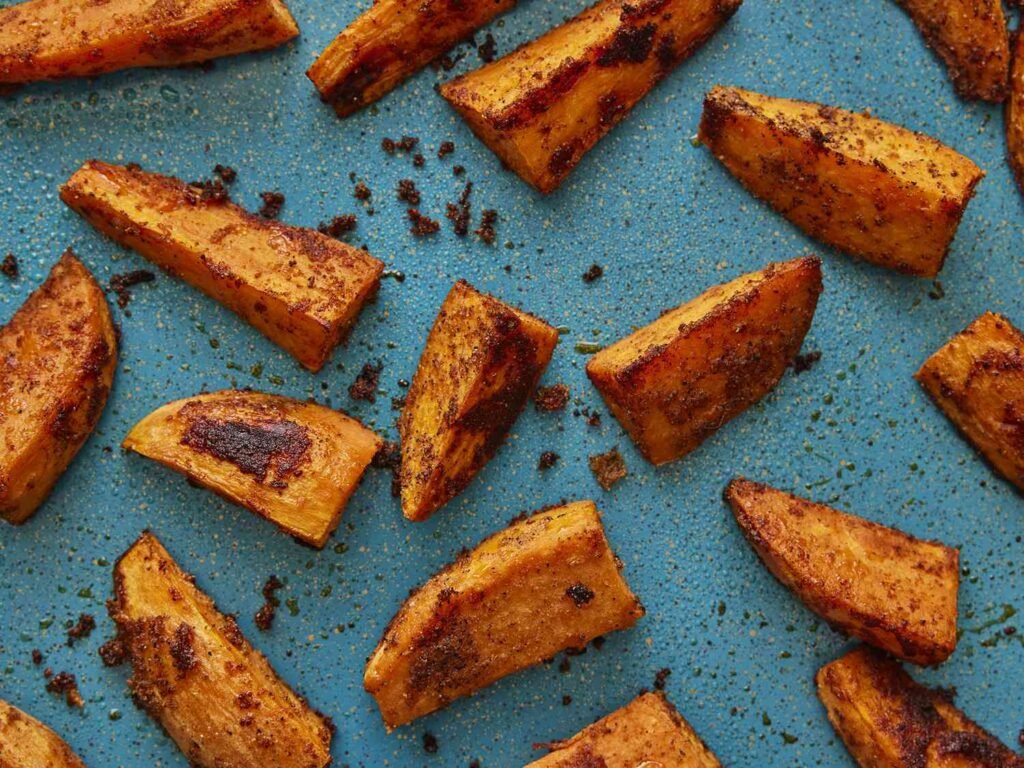Sweet potatoes, with their rich, vibrant color and sweet, comforting taste, have become a staple in many kitchens around the globe. Packed with nutrients, fiber, and antioxidants, they offer more than just their delightful flavor. Whether you’re a seasoned chef or a cooking novice, mastering the art of cooking sweet potatoes can elevate your culinary skills and introduce you to a world of delicious, healthy meals. This comprehensive guide will walk you through everything you need to know about how to cook sweet potatoes, from selecting the perfect specimens to exploring various cooking methods.
Selecting and Preparing Sweet Potatoes
Before diving into the myriad ways to cook sweet potatoes, it’s essential to know how to pick the best ones and prepare them for cooking. Look for sweet potatoes that are firm, with smooth, tight skin and no signs of bruises or soft spots. Smaller sweet potatoes tend to be sweeter and more flavorful than their larger counterparts. Once you’ve made your selection, preparation is key. Begin by thoroughly washing the skin to remove any dirt or debris, as sweet potatoes are often eaten with the skin on. Depending on the cooking method you choose, you may need to peel them, slice them, cube them, or leave them whole.
Boiling Sweet Potatoes
Boiling is one of the simplest methods for cooking sweet potatoes, making them perfectly tender for mashing or further cooking. Start by cutting your sweet potatoes into even chunks to ensure uniform cooking. Place them in a large pot of boiling water, seasoned with a pinch of salt, and let them cook until they are fork-tender, usually around 15-20 minutes depending on the size of the chunks. Once done, they can be easily mashed with a bit of butter, milk, and seasonings for a classic side dish, or used as a base for soups and stews.
Baking and Roasting Sweet Potatoes
Baking or roasting sweet potatoes brings out their natural sweetness and results in a soft, creamy interior with a delightfully crisp skin. To bake a whole sweet potato, prick the skin several times with a fork, wrap it in foil (if desired), and bake in a preheated oven at 400°F (205°C) for about 45-60 minutes. For roasted sweet potatoes, cut them into cubes or slices, toss with olive oil and your favorite seasonings, and spread them out on a baking sheet. Roast in a preheated oven at 425°F (220°C) for 25-30 minutes, or until they are golden and crispy on the outside.
Sautéing Sweet Potatoes
Sautéing is a quick and easy way to cook sweet potatoes, especially if you’re looking for a flavorful, crispy addition to your meal. Start by peeling and cutting the sweet potatoes into small, even pieces. Heat a generous amount of oil or butter in a large skillet over medium-high heat. Add the sweet potato pieces and cook, stirring occasionally, until they are golden brown and tender, about 10-15 minutes. This method is perfect for breakfast hashes or as a tasty side dish.
Grilling Sweet Potatoes
Grilling sweet potatoes imparts a smoky flavor that’s hard to achieve with other cooking methods. Begin by slicing the sweet potatoes into thick rounds or wedges. Pre-cook them by boiling or microwaving until they are just tender to reduce grilling time and ensure they cook evenly. Brush the slices with oil and season as desired. Grill over medium heat for about 3-5 minutes on each side, or until grill marks appear and the potatoes are tender. Grilled sweet potatoes make a fantastic summer side dish or a healthy alternative to traditional grilled fare.
Steaming Sweet Potatoes
Steaming is a gentle cooking method that preserves the nutrients and natural flavors of sweet potatoes. Cut the sweet potatoes into uniform pieces, and place them in a steamer basket over a pot of boiling water. Cover and steam for about 15-20 minutes, or until the sweet potatoes are tender. This method is ideal for those who prefer a softer texture without the added calories from oil. Steamed sweet potatoes can be mashed, used in salads, or served as a simple, healthy side dish.
Conclusion
Sweet potatoes are incredibly versatile and can be cooked in numerous ways to suit any taste or dietary preference. From boiling and baking to sautéing and grilling, each method offers a unique texture and flavor profile that can enhance your meals. By following this guide, you’ll not only master the art of cooking sweet potatoes but also unlock a treasure trove of nutritious, delicious recipes to enjoy year-round. Whether you’re preparing a cozy family dinner or a special holiday feast, sweet potatoes are sure to be a crowd-pleaser.
FAQs on How to Cook Sweet Potatoes
1. How do I choose the best sweet potatoes at the store?
Look for sweet potatoes that are firm, with no soft spots, bruises, or signs of sprouting. The skin should be smooth and even in color. Size can be a matter of personal preference, though smaller sweet potatoes are often sweeter and creamier.
2. Do I need to peel sweet potatoes before cooking?
It depends on the recipe and personal preference. The skin of sweet potatoes is edible and packed with nutrients, so you can leave it on for most cooking methods, including baking, roasting, and grilling. However, you may prefer to peel them for dishes like mashed sweet potatoes or certain soups and stews.
3. How long does it take to boil sweet potatoes?
Boiling time for sweet potatoes varies based on the size of the pieces. Small cubes might take about 15 minutes, while larger chunks can take up to 30 minutes. They’re done when you can easily pierce them with a fork.

